You gotta love a day when the National Post runs a correction that touches on math and physics. I found this video in helping to understand this.
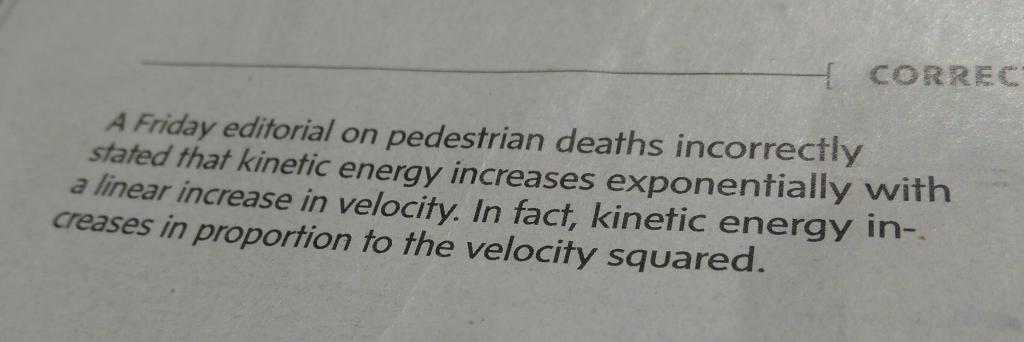
Many years ago, on the shore of Lake Simcoe, with an early paramour.
We were squirreled away at her parents’ cottage for a weekend of assignations. We rented The Big Chill on VHS, shopped for groceries, and tucked in for a couple of days away from the world.
As we started the videotape playing we indulged in whatever illicit hallucinogen she’d secured (she was older, more worldly, and my spirit guide as regards mind-altering).
The call comes: there’s been a suicide at the summer home. The word goes out to old friends, and they make their way to the countryside.
Tom Berenger, Mary Kay Place, Jeff Goldblum, William Hurt, JoBeth Williams, Don Galloway, Meg Tilly.
We get hungry, and pause the video.
We retire to the kitchen, and make a fantastic meal (see also hallucinogens).
After perhaps 45 minutes of cooking and eating, we resume The Big Chill.
Oddly, everyone–Tom, Mary Kay, Jeff, William, JoBeth, Don, Meg–is packing up and getting ready to leave. This seems premature: shouldn’t there be more plot development in this movie? Where’s the chill?!
And then the credits role.
We are perplexed, but still mind-altered enough that we’re willing to accept the working premise that The Big Chill is a very, very short film that was very, very over-rated.
The next morning we realize that rather than pausing the film, we’d let it run during our meal break. And so had simply let the meaty heart of The Big Chill pass us by.
I have yet to re-watch it.
But let’s set that aside for moment and address the real question of the film.
How did the old friends from The Big Chill recognize each other after so long?
I spent the meaty heart of my day today at the celebration of the life of my friend Laurie Kingston. In so-doing I found myself in the company of both many unknown strangers and many long-ago-and-far-away-known familiars. While I recognized some of those familiars, many of them I didn’t recognize at all. And some of those, even once introduced to me, rang no bells.
There was a man I will call David, for example, who provided strong documentary evidence that he and I were once, if not friends at least of the same tribe. He quoted the details of events and conversations in which we’d both participated. Referenced common friends. Inside jokes. And yet, even with all this, I drew a complete blank. We had obviously been there.
But, nothing.
I had difficulty falling asleep last night due this absence in my memory: I was worried that I’d suffered targeted memory loss. Or that the whisky that my friend Tim kindly served me as a nightcap had broken my brain.
David is a thoroughly engaging fellow, quick with a comeback, easy with a story, kind of disposition and demeanour, and not the sort of person I would have cause to erase from my memory.
But, nothing.
Other cases were less severe: the midwife I convoyed to Texas with in the late 1980s who I didn’t recognize (although, to my credit, once she reminded me who she was, I at least recalled her existing).
But there was a pall of time over the proceedings which gave lie to the notion that I have complete recall of the events in my life.
And yet the group from The Big Chill all seemed to have immediately picked up from where they left off.
This seems implausible, and doesn’t prompt me to revisit the missing hour of the film.
––––––
The event in celebration of Laurie’s life was held in the Glebe Community Centre, a grand former Methodist church re-purposed for the neighbourhood.
Hundreds of people from all parts of Laurie’s life–teenage roommates to later-day book club pals. About a dozen spoke, with heart and humour and grief and grace, from the podium.
Truth be told, although I call Laurie my friend, we never really met.
We attended the same university.
The Venn diagrams of our groups had significant overlap.
She married a wise and thoughtful friend.
And yet it wasn’t until recent years that we became acquainted, and even then it was primarily an email friendship circling around breast cancer, something originally a passing interest of mine when we first corresponded about her book, Not Done Yet, and then, suddenly, after Catherine’s own breast cancer diagnosis, a dramatically more personal one.
Despite her own significant medical concerns, Laurie was a frequent source of education, enlightenment and humour over the past 4 years.
From June of last year:
My kids were 2 and 7 when I shaved my head.
We ended up having a spontaneous head shaving party. We had temporary hair colour for us all. Our friends Eve and Ellen were in town, along with my mother. My friend Liam came over with clippers to do the honours. We took lots of photos. It all made it so much better.
On the other hand, I have a very distinct memory of sitting on my kitchen floor as a child and my mother coming home with new glasses. I burst into tears and would not stop until she put her old ones on.
Our kids don’t want us to change.
And none of this is easy.
And from May:
That palliative program sounds incredible. I think it’s really important to make the point that palliative care and hospice care are not the same thing. This shows that palliative care is about continuing living as best you can.
And from August of 2016, when I sent a note that Catherine was out of hospital:
That is fantastic news.
I am so glad. This is such a hard road but it sounds like you are getting good care moving forward.
I am obsessed with explaining palliative care too. I think there are people who avoid taking advantage because they think that palliative is the same think as hospice care. And then they miss out on resources that can really improve quality of life.
I have to share one last thing. I snorted at one point in your letter. Tim asked me what could have made me do that. I told him to read and he would know. Hit the sentence that included the word “bored” and snorted too. We have so been there.
And from June before then:
I got my first tattoo at 44, when I was well into cancer treatment. It’s also on my left calf. :)
Laurie and I came face-to-face only twice.
In 2009 Tim and Laurie and their boys had supper with us in our back yard on a beautiful August evening. Before they arrived, she emailed me about arrangements, and added:
Peter, it will be so nice to finally meet you. At Trent, I referred to you as the Snuffleupagus (had to google the spelling on that). My friends would say, “I just saw Peter Rukavina!” or wave at a passing car and say, “That was Peter Rukavina.” Everyone seemed to know (and like) you. But I was becoming convinced you didn’t really exist.
But I did exist, and so did she, and it was a lovely evening.
And then, in the fall of 2015, we stopped over to visit them while we were en route to Oslo and had an Ottawa stopover.
By that time it was a year after Catherine’s diagnosis, and yet an evening of tacos around their dining table that could have been maudlin was simply two families having supper with each other. We knew.
As you might imagine, the memorial for Laurie was packed with some additional resonance for me.
Last night I had the chance to get together with my friends Chris and Lene and their son Graham (fortunately we all remembered each other). While making our arrangements for supper, Chris texted “My first thought is of Tim.”
Which was entirely appropriate. And yet, I realized, that was not where my first thought was.
To come around to the point where I could confront both the loss of Laurie and the grief of my friend Tim, I had to swim through that resonance, and come to see today’s proceedings not (simply) as a template for what looms, eventually someday, in my life. Not an easy thing.
But here I am, on VIA Rail № 38 from Ottawa to Dorval, with tears streaming down my face, thinking about my friend Laurie and my friend Tim and how much they’ve meant–and do mean–to me.
At the end of the proceedings today someone said that although today was a celebration of Laurie it was hard not to be sad, and it is hard not to be sad. As I’ve just suddenly discovered.
In the words of one of the speakers was a story about how Tim and Laurie decided at one point that they needed to resolve to have more fun, despite it all.
And so they did. Not an easy feat, and by no means a universal salve. But important and helpful.
And so the other side of resonance is not only about shared grief and loss and sadness, but also about inherited hope. Not hope for the impossible or unreasonable but simply hope for as much of a fullness of life as we can muster.
As I listened to Laurie’s roommates and activist co-conspirators and book club friends and coworkers and MBC travelers today, Laurie emerged to me as a fuller person than I’d ever known. That both amplifies the sense of loss, but also makes me feel all the luckier for eventually convincing Big Bird to let us meet.
After breakfast this morning I had some free time, and, as my hotel is only blocks from Parliament Hill, I walked up Metcalfe and found an excellent perch, inside a bus shelter, from which to make a quick sketch.
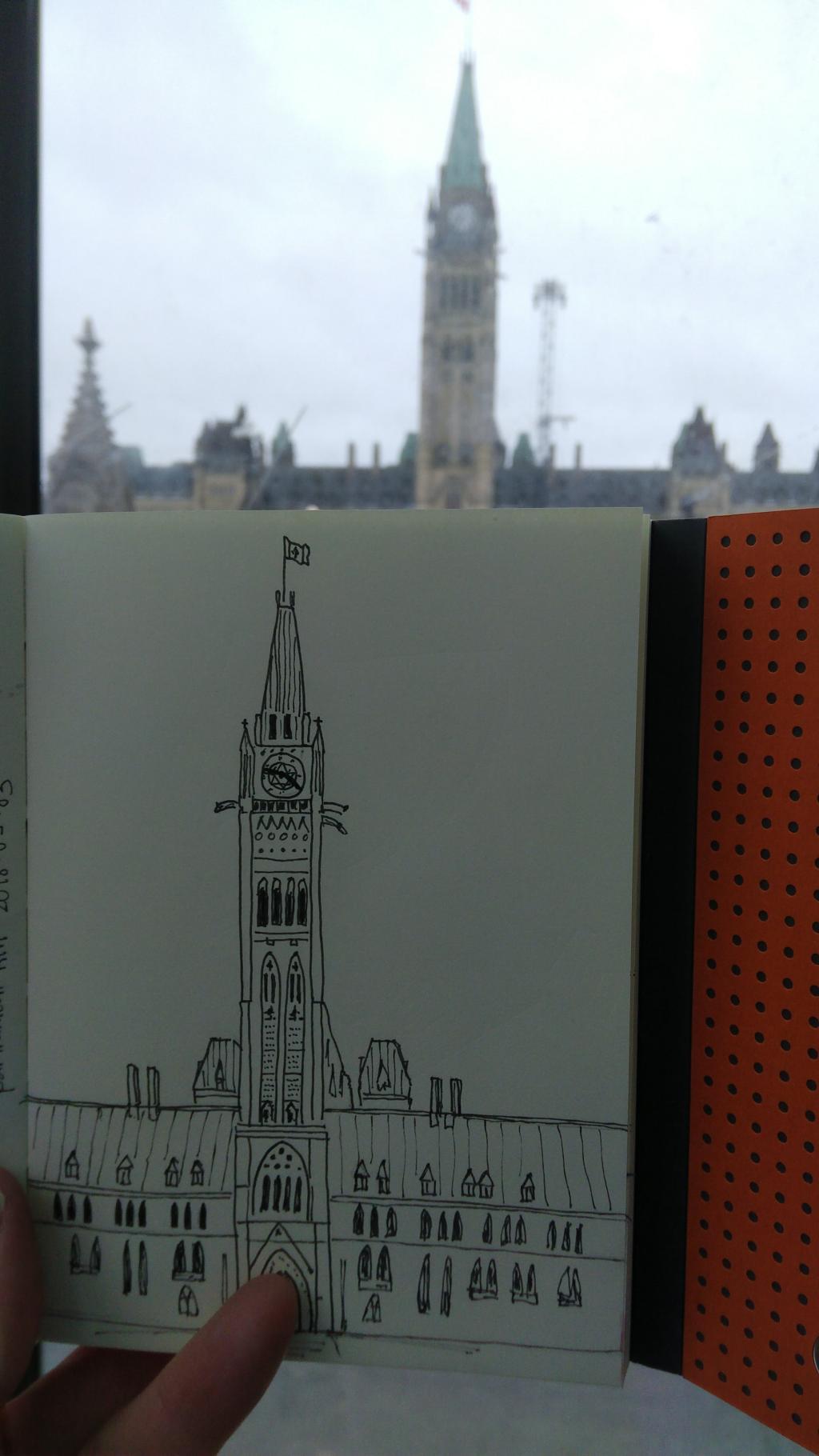 ,
, 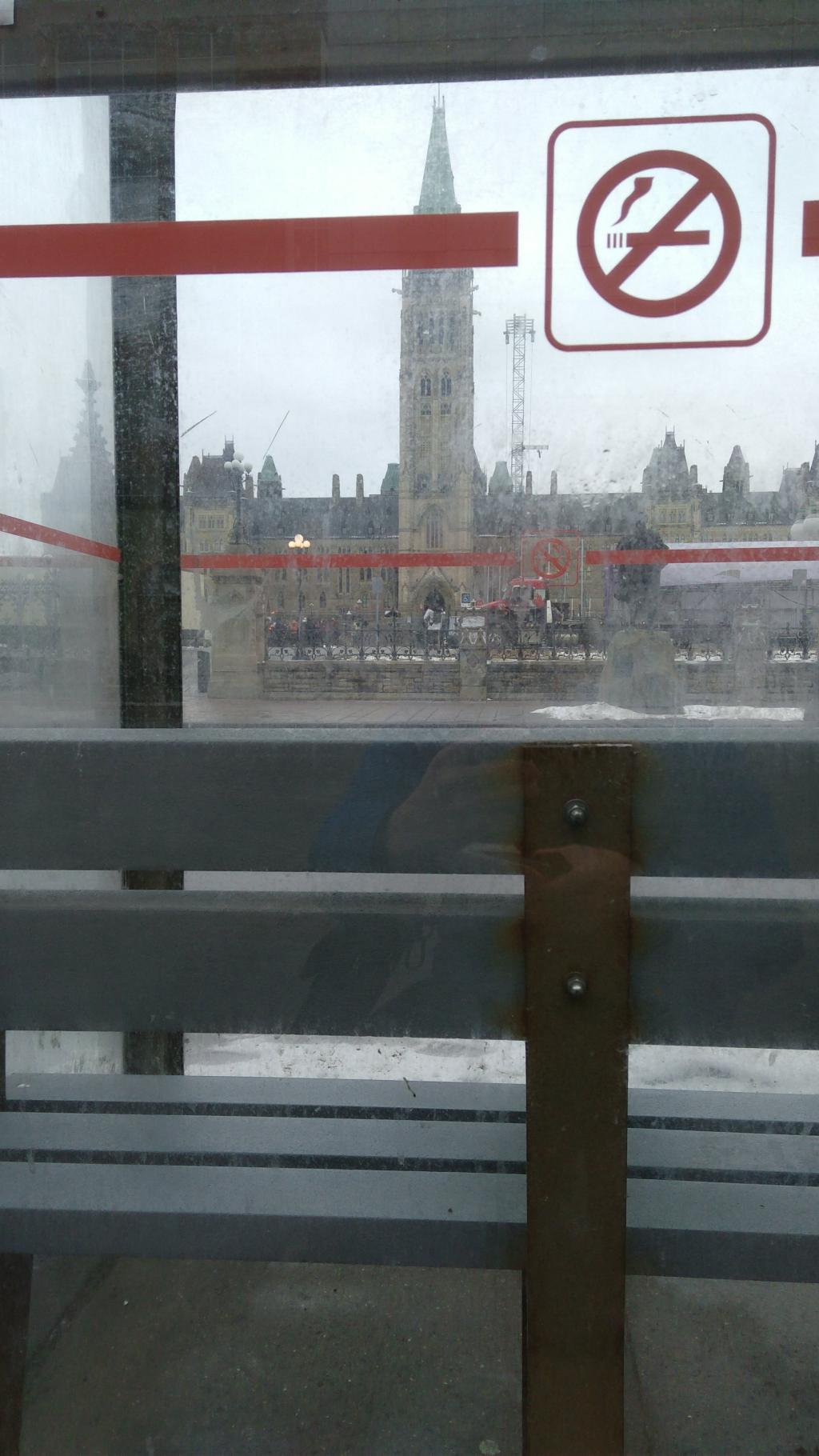
I’d planned to take public transit from Trudeau Airport to my brother and sister-in-law’s house in Montreal, but when I emerged from the arrivals area, however, I was immediately greeted by a banner advertising Téo Taxi, with an all-electric fleet, and I remembered that I’d signed up for an account last year but never used it.
Never one to turn down an opportunity for a novel experience, I quickly downloaded the Téo app, and booked myself a car.
The app told me that it would be there in 8 minutes and, sure enough, by the time I reached Gate 6 (on the departures level, a temporary source of confusion), my driver, Aghil, was waiting for me in a Tesla Model S.
Aghil turned out to be a personable chap, and gave me the lowdown on what it’s like to drive a Tesla, what the battery life is like in a Montreal winter, and what it’s like to drive for Téo. And he expertly drove us in a such a way as to avoid the paralyzing rush hour traffic along Rte. 40.
My plane landed at 4:56 p.m., I left the airport at 5:11 p.m., and Aghil dropped me off in the city at 5:56 p.m., a trip of 45 minutes.
The fare was $55; with a 20% tip it came to $66. Which is a lot more than the $13.25 that it would have cost me by a combination of the 747 bus and the Metro. But it also saved me 30 minutes and a lot of luggage-juggling-on-escalators, was a zero-emissions trip, and gave me a chance to ride in a Tesla for the first time.
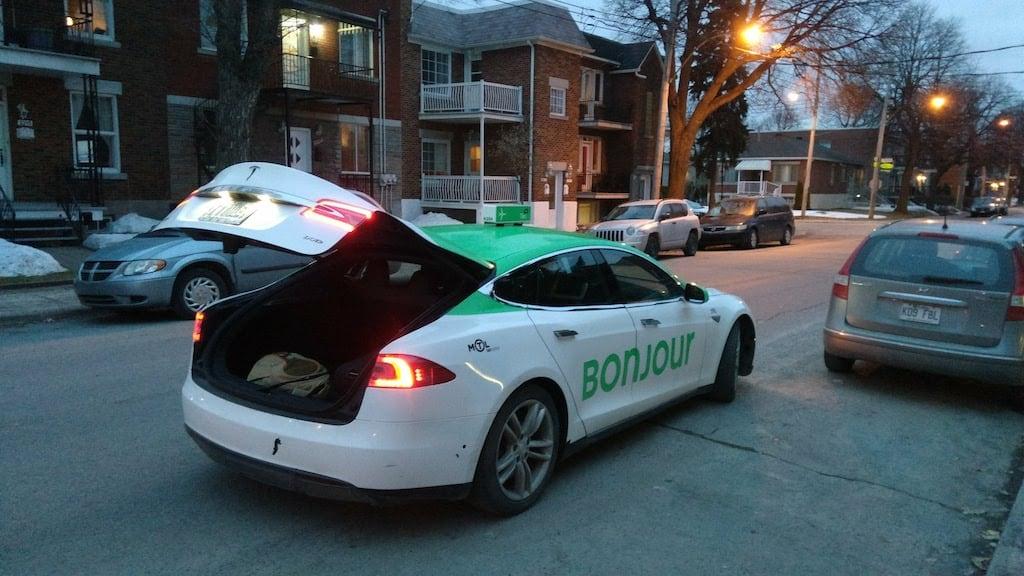
In all the years I’ve been flying since Air Canada introduced its “we decided there needs to be even more classism when flying” zoned boarding system, I’ve universally been assigned to Zone 6, the “you’re a complete a total loser and mean nothing to us” zone.
But today, miracle of miracles, I was assigned Zone 2 for my flight to Montreal.
Solidarity with the lesser zones should have dictated that I artificially delay my boarding. But power corrupts, and we so quickly forget whence we came. So I boarded with the other Zone 2ers. It was luxurious.
I am, slowly, en route to Ottawa for a celebration of the life of Laurie Kingston, a friend who died in January. It’s an odd way to spend a midwinter break—my friend Gordon is on the same plane, in the way to Mexico, which seems more sensible—but one I’m looking forward to for reasons I can’t completely explain.
Before Ottawa, though, I will spend the night in the company of my young Lower Canadian nephews (and their parents) in Montreal. Then train to Ottawa where I’ll spend Friday night and Saturday. Finally back to Montreal for Saturday night, and home Sunday.
Now, off to enjoy the onboard pleasures of boarding Zone 2.
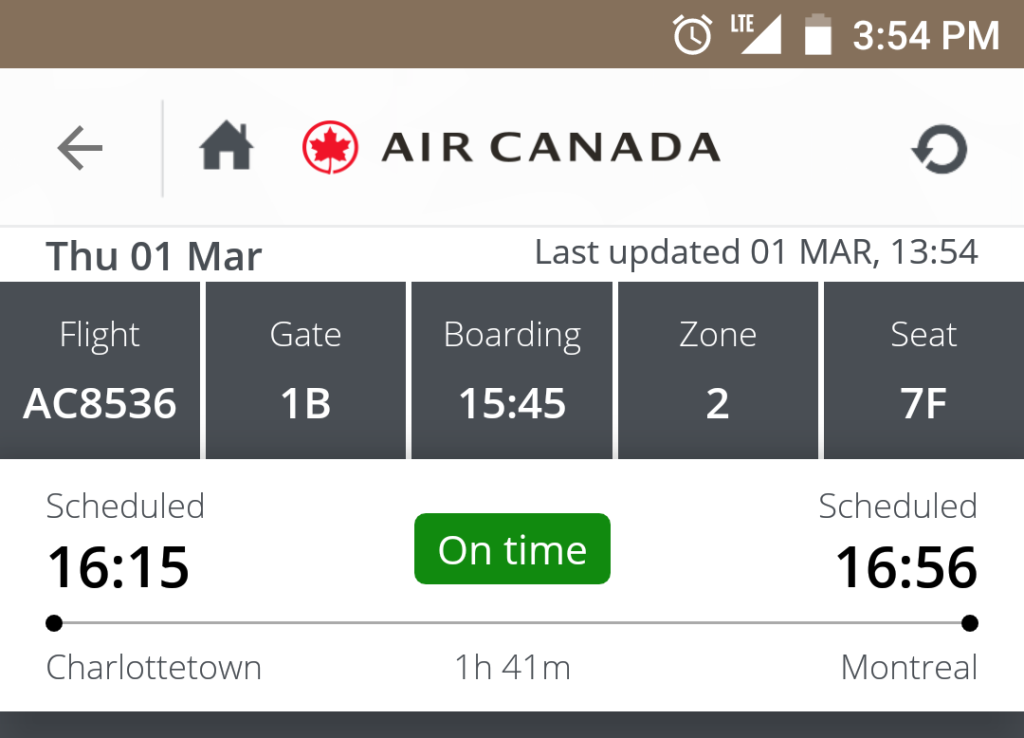
Six years ago I moved my office from 84 Fitzroy Street into the second floor of The Guild, 3 blocks south, leaving my mates at silverorange behind, and placing myself inside the rollicksome heart of the Island’s musical theatre scene.
The Guild has been a lovely home for these 6 years, but I’ve been getting itchy feet since last summer. It would be nice to have “composing” and “printing” in the same room, as opposed to being separated, as they are now, by three flights of stairs. I was looking to save a little on rent. And, truth be told, for all its myriad wonders, I didn’t feel myself capable of living through another season of Anne and Gilbert playing steps from my desk through the summer and fall.
So I’ve been keeping my eyes open for possible new homes.
I have unique needs: I need both a digital-friendly office space, and a space capable of supporting the weight of a 1 tonne letterpress. Such spaces are not easy to come buy: unlike other cities, Charlottetown doesn’t have an industrial past that left hulking factories ready to be re-purposed. Downtown office space is always in short supply, and downtown “light industrial” space is almost non-existent. Believe me: I’ve looked at almost everything available over the last 10 years.
One day in January, though, I happened to be cutting through the yard between St. Paul’s Anglican Church and the church’s Parish Hall. I noticed a light on in the basement, which was the first time I was aware that there was a basement under the Parish Hall.
Which is strange, because I’ve lived directly across the street from the Parish Hall for the last 18 years. You think I would have figured this out.
When I got home, I sent the church office an email, inquiring as to whether they might have space in the basement they were interested in renting out; the next morning I received an email back telling me that, indeed, they did have a room to let, and that I was welcome to take a look at it.
Long story short: the room turned out to be perfect. And I have a new office.
It’s about the same size as my current office, 300 square feet (about 25 square metres), has a solid poured concrete floor, easy access, with wide hallways and strong staircase, to the parking lot (important for moving heavy objects like the letterpress) and, despite being in the basement, is bright, has two windows and a ventilator.
And, of course, most significantly: it’s at 101 Prince Street, about 14 seconds walk from our home at 100 Prince.
I picked up the keys to the new office yesterday, and I’ll gradually migrate east up Richmond Street over the month of March.
Lots of arrangements still to be made. I’m hoping to be able to beam Internet across Prince Street to allow me to have one high-speed connection for both home and office. I need to arrange to have McQuaid’s come and move the letterpress (and to figure out how to shave off an inch of its width to allow it to fit in the 31 inch wide door to the new office). I’m going to swap out the fluorescent lights for LED ones, and I need a couple of additional electrical outlets installed. And there’s moving the rest of my stuff, which I plan to do a little bit of each day.
The church has been nothing but wonderful and welcoming through all of this: they cleared out the room, which had been a Sunday School classroom in a former life (hence the cloak hooks and dual blackboards and bulletin boards, one at either end of the room) and was, more recently, a storage room. They repaired and painted the floor. And, most importantly, they’ve fully embraced the notion of my tenancy.
It’s not without some trepidation that I move, mind you. Nothing to do with the new home, but a fear that, by having work and home be so close, I’ll end up constricted my already-geo-constrained life further. I’ll need to make a little more effort to leave the neighbourhood more often.
Fortunately, I long ago mastered the art of not working all the time, so I’ve little fear about “I’ll just pop over to the office for a bit after supper” creeping back into the 3:00 a.m. coding sessions of yore: my mind and body no longer support that kind of activity.
When the move is complete, and the dust has settled, I’ll have an office-warming and invite you all.
It’s 25 years this month since I moved to Prince Edward Island; my first office was at 156 Richmond Street. So it’s taken me a quarter century and I’ve simply moved 600 feet east.

Our hearty band of Prince Edward Island subscribers to The New Yorker–about a dozen of us–gathered in conclave last night in the lounge of The Haviland Club.
As it happened, the annual meeting of the Charlottetown Yacht Club was happening in the room next door, meaning that there might never before have been a greater concentration of the Island’s pompous (it’s notable that there was one person who lives in the union of the two groups who opted for the Yacht Club gathering, which, I think, marks it as being slightly more pompous; but it’s a toss-up).
Our gathering was everything I’d hoped it would be: a motley collection of young and old, rural and urban, longtime subscribers and aspirational ones.
Among us were someone who had achieved the hat trick of visiting the New Yorker’s offices, volunteering at the New Yorker Festival, and having had supper with Calvin Trillin.
We heard the tale of a subscription shared between brothers, then inherited when one brother died, then passed along to the next generation (what a life those copies must have had as they wended through the extended family).
Only one of our number had ever entered the cartoon contest.
Nobody had pitched the magazine on a story. Yet.
There was a rainbow of opinion about reading the magazine online, ranging from my originalist position that it is only truly experienced on the printed page, to those who are daily, enthusiastic consumers of the website in a way completely foreign to me.
We talked about whether we read the fiction (ranging from “never” to “sometimes it’s all I read”), whether we read the poetry (“always” to “The New Yorker prints poetry?!”), and whether we read the front-of-book listings (almost everyone seems to, even though we’re 2000 km away from New York and the magazine arrives a week late).
We reviewed a dossier of editorial mentions of Prince Edward Island in the magazine over the last 93 years, running from casual mention of Malpeque oysters to the 1996 article by the aforementioned Trillin about Anne of Green Gables.
Plans to ferry back issues to the aspirational were arranged. Email addresses exchanged. Feelings that we might someday do it again were floated.
My thanks to journalist Meg Campbell for being the catalyst to bring us together; Meg was there last night, with her inquisitive ears on, and it wouldn’t surprise me if something arises out of this from her pen.
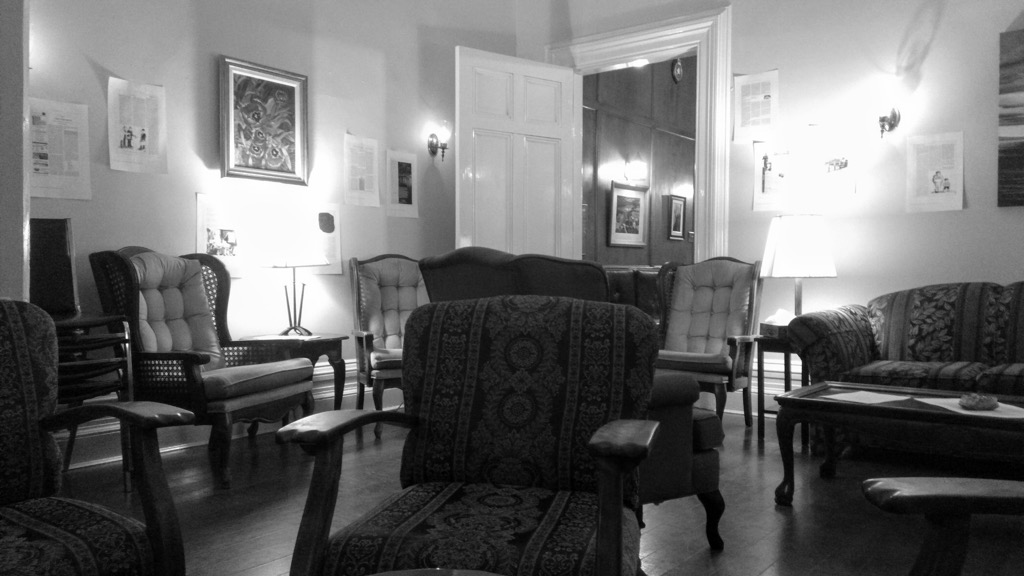
Ever since we’ve been paying the people who work with Oliver after school and on weekends, and making Canada Revenue Agency payroll remittances for them, I’ve been confused about one thing: what pay periods to include in my monthly remittances.
Take this week, for example: we paid Oliver’s workers last Friday, we’ll pay them this coming Friday, and the end of the month is today, in the middle. Do I include last week’s pay? This week’s pay? Only a part of this week’s pay?
The answer, helpfully explained over the phone by a CRA customer service agent, is really simple: you remit for the pay you paid out in the month you’re remitting for.
So today I’ll remit for the weeks ending February 2, 9, 16 and 23, because those all fell in February.
But I won’t include the week of March 2. Because that’s in March.
Problem solved.
With new prescriptions for two pairs of eyeglasses in-hand, and two relatively new sets of frames in daily use, I set out to have new lenses put in the current frames.
I was worried, though, that this would mean that I’d need to do without one set of glasses or the other for an extended period, and as each has its strong suit, this wasn’t an attractive prospect.
To my delight, however, when I went into Charlottetown Vision Care this morning to spec out the new lenses, they told me they could give me my current glasses back after taking measurements, order the new lenses, and then simply have me come in for 20 minutes to have the old ones swapped for the new.
I’d no idea this was possible, but it’s a big help.
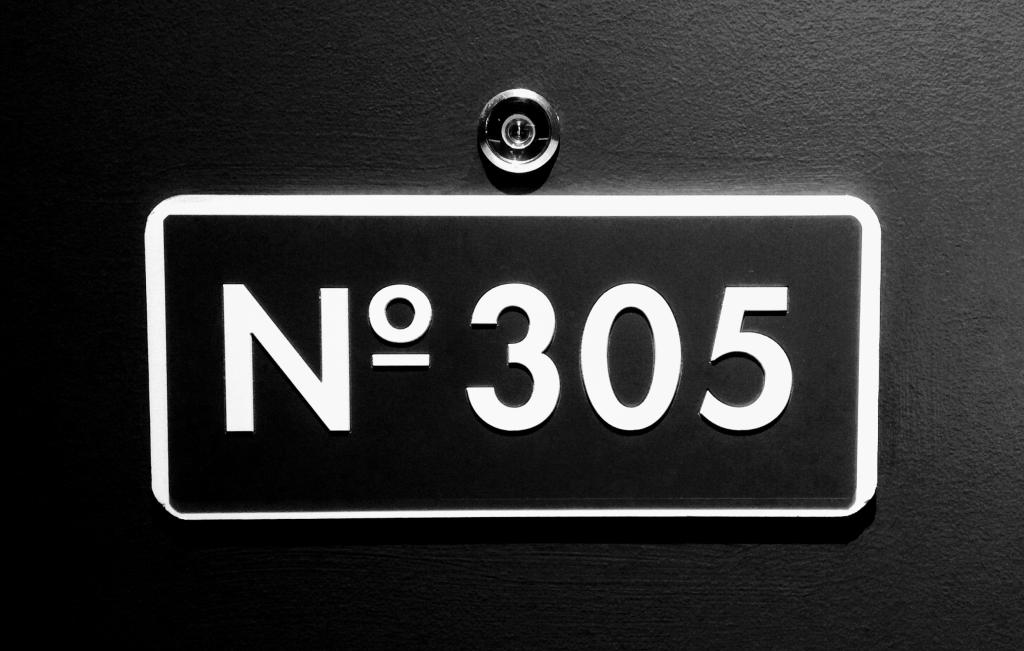
 I am
I am